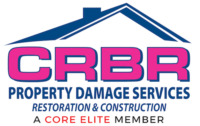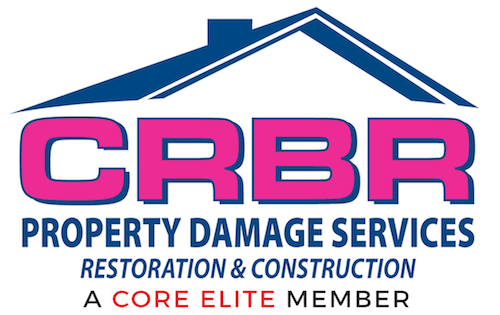In the aftermath of a major storm, the chaos of damage can feel overwhelming. From broken roofs to flooded basements, the list of repairs may seem endless. But did you know that delaying critical repairs could worsen the situation and lead to skyrocketing costs? The key to restoring your home lies in knowing what to address first and understanding how to prioritize repairs effectively.
Professional storm damage restoration services can make all the difference by helping you tackle the most urgent problems immediately while planning for long-term recovery.
Step 1: Ensure Safety First
Before assessing any damage, it’s crucial to ensure the safety of everyone involved. Storms can leave behind hazards like downed power lines, unstable structures, and standing water that might carry electrical currents or bacteria.
Immediate Safety Measures:
- Stay away from flooded areas and electrical hazards.
- Avoid entering the property until it has been inspected for structural integrity.
- Use proper protective gear, such as gloves and boots, when inspecting damages.
Calling an emergency damage restoration team at this stage ensures a professional evaluation of the situation, making it safe to begin repairs.
Step 2: Conduct a Thorough Damage Assessment
Once safety is established, the next step is assessing the extent of the damage. This step helps you prioritize what needs immediate attention and what can wait. Documenting the damage with photos or videos is also essential for insurance claims.
Areas to Inspect:
- Roofing: Look for missing shingles, leaks, or structural damage.
- Windows and Doors: Check for shattered glass, broken frames, or drafts.
- Walls and Siding: Look for cracks, dents, or sections that have come loose.
- Foundation: Inspect for visible cracks or shifts in the structure.
- Interior Damage: Identify water intrusion, ceiling leaks, and damp walls.
A detailed assessment ensures nothing is overlooked and allows restoration professionals to plan efficiently.
Step 3: Address Immediate Threats
After a storm, certain repairs must take precedence to prevent further damage or risks to health and safety. Emergency measures should focus on stabilizing the property and protecting it from additional harm.
High-Priority Repairs:
- Roof Repairs
A damaged roof is a gateway for water intrusion, which can lead to mold, rot, and structural weakening. Tarping exposed areas is a temporary but effective solution until full repairs can be completed. - Water Removal and Drying
Standing water from floods or leaks should be removed immediately to prevent mold growth and further damage to floors, walls, and insulation. - Boarding Up Openings
Broken windows and doors should be boarded up to prevent further exposure to the elements and deter potential break-ins. - Electrical System Check
Water exposure to wiring and outlets can cause electrical fires. Have a professional inspect and repair any damaged electrical systems.
Step 4: Separate Cosmetic Repairs From Structural Repairs
Not all damage needs to be fixed immediately. Cosmetic issues, like minor dents or scratches, can wait until structural concerns are resolved. By focusing on structural repairs first, you’ll ensure your home is stable and safe.
Examples of Structural Repairs:
- Roof replacement or reinforcement
- Addressing foundation cracks
- Rebuilding walls damaged by water or wind
Examples of Cosmetic Repairs:
- Repainting walls
- Fixing superficial siding damage
- Replacing decorative fixtures
Prioritizing structural repairs ensures the home’s integrity while allowing you to handle cosmetic updates later.
Step 5: Prevent Future Damage
As you repair your home, consider taking steps to fortify it against future storms. Modern building materials and techniques can help your home withstand severe weather conditions better than before.
Upgrades to Consider:
- Impact-resistant shingles and roofing
- Reinforced windows and storm shutters
- Improved drainage systems to prevent flooding
- Securely anchoring outdoor structures like decks or sheds
Investing in these upgrades during the restoration process can save you significant money and stress in the future.
How Storm Damage Restoration Services Help
Handling storm repairs alone can be daunting, especially when time is of the essence. Professional storm damage restoration services bring expertise, tools, and experience to the table, ensuring that your home is restored efficiently and effectively.
Services They Provide:
- Comprehensive Assessments: Identifying both visible and hidden damages.
- Emergency Repairs: Immediate solutions like tarping roofs and boarding windows.
- Water Damage Mitigation: Advanced equipment for water extraction, drying, and dehumidification.
- Mold Prevention: Treating affected areas to eliminate mold risks.
- Full Restoration: Rebuilding and repairing everything from roofs to interiors.
With their help, you can avoid common pitfalls like missed damage or improper repairs.
The Importance of Emergency Damage Restoration
When severe storms strike, delays can lead to escalating problems like mold infestations, structural deterioration, and increased repair costs. An emergency damage restoration team responds quickly, ensuring your property is stabilized and safe.
Why Speed Matters:
- Mold Growth Prevention: Mold can develop within 24-48 hours of water exposure.
- Minimized Secondary Damage: Quick action prevents water or structural issues from worsening.
- Peace of Mind: Knowing your home is in expert hands reduces stress during a difficult time.
Prioritization Checklist for Homeowners
To stay organized, follow this prioritization checklist after storm damage:
- Ensure the safety of all occupants.
- Contact emergency restoration professionals.
- Document all damage for insurance claims.
- Address immediate repairs like roof tarping and water removal.
- Separate structural from cosmetic repairs.
- Plan for long-term upgrades to prevent future storm damage.
Closing Thoughts: Be Prepared and Proactive
Recovering from major storm damage is a challenging process, but prioritizing repairs ensures a faster and more effective restoration. Focus on immediate threats first, tackle structural repairs next, and plan for upgrades to safeguard your home in the future. With the expertise of storm damage restoration professionals, you’ll navigate this difficult time with confidence and come out stronger on the other side.

